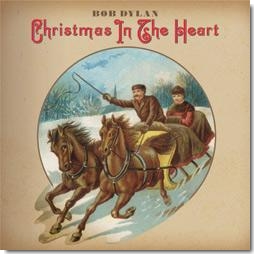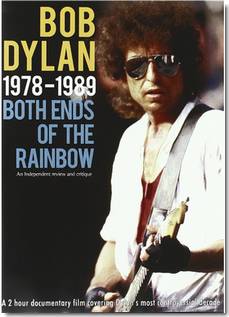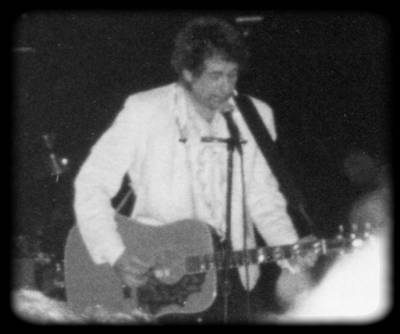On the current tour, Bob Dylan’s shows have not included an opening act. That will change for the final three (or four?) nights of the tour in New York City. The opening act on those nights will be the artist concisely known as Dion. Most famous for his big 1960s hits The Wanderer and Runaround Sue, he’s had an active career in music since 1957. He is a New Yorker, born in the Bronx in 1939 as Dion DiMucci.
Why the addition of an opening act for these New York shows, and why Dion? Who knows? However, one can’t help noticing a few interesting and sometimes poignant intersections and coincidences between the lives and careers of Dion and Dylan.
Dion (with his group the Belmonts) was part of the Winter Dance Party tour along with Buddy Holly, the Big Bopper and Ritchie Valens. The young Bobby Zimmerman saw their show on January 31st at the Duluth Armory. Three days later, as we know, the plane carrying those other artists crashed and they all were lost. Dion had declined to travel to the next gig by air, apparently thinking the $36 ticket price excessive.
Another intersection is a song: Abraham, Martin and John. Dion was the first to have a hit with the Dick Holler ballad, in 1968. Bob Dylan later performed the song in concert more than twenty times from November 1980 through June 1981.
And then there’s this: on his website, in an essay he titles “My Spiritual Journey,” Dion describes a pivotal moment in his life.
On December 14, 1979, I went out jogging, like I did every morning. It was a time when I could be alone with my thoughts — thinking about the past, thinking about the future. There was a lot going on in me then, a mid-life crisis, or something. My emotions were everywhere. In the middle of that confusion, all I could pray was “God, it would be nice to be closer to you.” That’s all it took.
I was flooded with white light. It was everywhere, inside me, outside me — everywhere. At that moment, things were different between me and God. He’d broken down the wall. Ahead of me, I saw a man with His arms outstretched. “I love you,” He said. “Don’t you know that? I’m your friend. I laid down My life for you. I’m here for you now.” I looked behind me, because I knew I’d left something behind on that road. Some part of me that I no longer wanted. Let the road have it; I didn’t need it anymore.
God changed my life that morning, and things have never been the same.
Sounds not so unlike the experience Bob has described having, doesn’t it? Dion went on to record gospel and Christian-themed music for the next several years, returning to more general material in the late 1980s.
In 1995, he recorded a Christmas album entitled Rock ‘n Roll Christmas .
.
As far as I can tell, it received some very good reviews and some very bad ones.
So, while I don’t know to what extent the two Mr. D’s may be on familiar terms already, it seems that they might have more than a few notes to compare backstage, or over a beer after the gig.
…
Addendum: Thanks very much to Ron Radosh for emailing this additional note:
You missed one other Dylan-Dion connection. Last year, Dion released his wonderful “The Bronx in Blue ” CD, of all traditional blues songs. Of course, Bob has been playing these for quite some time. Dion fingerpicks them all on acoustic guitar. I happened to hear Dion interviewed on the radio, and he said that most people don’t know, but he hung out in the Village in the 60’s, and was close to Dave Van Ronk and both took lessons from him, jammed with him etc. And as we know, Dylan too was close with Dave Van Ronk. So it is not far fetched to think that both Bob and Dion came into contact with each other at that time. Right?
” CD, of all traditional blues songs. Of course, Bob has been playing these for quite some time. Dion fingerpicks them all on acoustic guitar. I happened to hear Dion interviewed on the radio, and he said that most people don’t know, but he hung out in the Village in the 60’s, and was close to Dave Van Ronk and both took lessons from him, jammed with him etc. And as we know, Dylan too was close with Dave Van Ronk. So it is not far fetched to think that both Bob and Dion came into contact with each other at that time. Right?
Sounds good to me.
…
Addendum II (11/9/2009): Thanks to Fred who emails that Dion wrote about Dylan’s influence on him in his 1988 autobio, The Wanderer . However we don’t have access to a copy or quotes at the moment, and the book is out of print.
. However we don’t have access to a copy or quotes at the moment, and the book is out of print.
…
Addendum III (11/9/2009): And thanks to Frank for his email today:
I saw the Dylan/Paul Simon tour here in South Florida about 8 years ago. Dion lives here in Boca Raton. During the part of the show where Dylan and Simon played together Dylan said “Here’s a song by Dion … that’s him sitting right there.” Then they did the Wanderer, with Dion sitting in the fifth row. Seems clear they know each other.
Exactly right — Frank is referring to this show from September 2nd, 1999. And the review at Bob Links also refers to Dylan giving a shout-out to Dion in the audience.
I’d forgotten, but Paul Simon and Dylan performed a medley of That’ll Be The Day and The Wanderer a whole bunch of times during their tour together.
…
Addendum IV (11/9/2009): And thanks to Jeff R. ( “left-wing Bobster”) for this additional angle and info:
Hello … the main connection between Dylan and Dion is that they were labelmates at Columbia in the mid-’60s. Dion’s A&R guy’s office was down the hall from John Hammond’s, and one day he heard strange music emerging from the record player down the hall… had never heard anything like that before, was drawn to it like a moth to a flame… went in and met Hammond who introduced him to the blues, proceeded to turn him on to Muddy Waters, Robert Johnson, and all the greats… and to new folk singer-songwriters like Dylan and Tom Paxton, making available demos of unreleased Dylan songs to him. Dion went on to record many amazing blues and folk covers, but Columbia squelched his career development in this direction as it didn’t jibe with the clean-cut pop smoothie image they wanted to maintain for him. If only he could have switched A&R reps to Hammond he might have been known as a true folk-rock pioneer. As it is, his album with backing band The Wanderers, Wonder Where I’m Bound (title song by Paxton) stands as a hint of what might have been, and later collections such as Bronx Blues (not to be confused with recent blues covers cd Bronx In Blue) and The Road I’m On brilliantly fleshed out this stage of his career with many un- or barely-released tracks. Dion’s contemporaneous Dylan covers, Farewell and Baby I’m in the Mood for You, are some of the best of their era. If he had been allowed to develop as an artist, he might never have instead developed a serious heroin habit. Though when he got clean he was ultimately vindicated, returning to the Belmonts’ original label, Laurie, to cut his self-titled folk-rock album which contained monster hit Abraham, Martin and John. Wow, I wish I could see one of those shows! Thanks for your interesting site.
…
Addendum V (11/10/2009): And finally (or maybe finally) thanks once again to Fred who found a copy of Dion’s memoir at the library, and offers this quoted passage:
at the library, and offers this quoted passage:
Dylan was another big influence on me. I’d met him once before, back at the Winter Dance Party when Bobby Vee had turned out to fill in for Buddy [Holly] the night after the crash. Vee’s keyboard player was a young kid named Zimmerman from Hibbing, just across the border in Minnesota.
He’d come a long way since then. I’m not saying anything a hundred critics haven’t said a thousand times better, but when Dylan burst on the scene, starting with his first Columbia album in ’62, it marked the clear end of one era in American music and the quick beginning of a brand-new one. Before Bob, no one dreamed you could tie the simplest melodies, the roughest arrangements, and the quickest takes together and come up with music that made everything else sound half baked. It was readily accepted at the time that the kid had no voice, but, of course, that only enhanced his mystery and appeal. It wasn’t how Dylan sang, or who was backing him up; it was what he said–his words–that stopped us all in our tracks. I fancied myself a songwriter because I could carve out a tune that caught people’s ears. With Dylan, for the first time, I knew how much more music could do. He was funny and tormented, vulnerable and guarded, mysterious and up-front, all at the same time. I wanted to be like him because he was being himself.
Eventually I got tight with Dylan’s producer at Columbia, a talented young guy named Tom Wilson. Wilson played some of the tracks Bob had been putting down in the studio and, as usual, it was awesome. Maybe I’d had my ear on the top of the charts too long, but it suddenly occurred to me that, with some players jamming behind some of those songs, he had a chance on Top Forty radio. Wilson thought it was worth a try, so he rounded up a bunch of session cats and took the tapes down to the old Columbia studios. Tom and I worked out some rock ‘n’ roll arrangements for Dylan’s folk stuff and let the musicians rip. I was right. It was totally in the pocket. Tom agreed and took the doctored songs back to Dylan. He went electric on his next album, Bringing It All Back Home. I really liked that album. Later, when I’d drop in to listen while he put his words into the razor-sharp work-outs cooked up by players like Al Kooper and Mike Bloomfield, I realized this guy had rock ‘n’ roll in his blood from the very beginning. It was all raw expression. Those sessions cooked.
So, we can add Dion to the list of people who got Dylan to go electric! Anyway, great stuff.
…
Addendum VI (11/11/2009): A correction: Thanks to Dan H. who emails to point out that Dylan’s three shows in Los Angeles at the Hollywood Palladium did also feature opening acts, a different one each night. They were, respectively, Johnny Rivers, John Doe, and George Thorogood. (Someone else can go dig out the parallels between those artists and Dylan.)
album in which the reviewer dismissed it as containing “only one masterpiece,” namely Every Grain of Sand. Cohen exclaimed, “My God! Only one masterpiece. Does this guy have any idea what it takes to produce a single masterpiece?”












